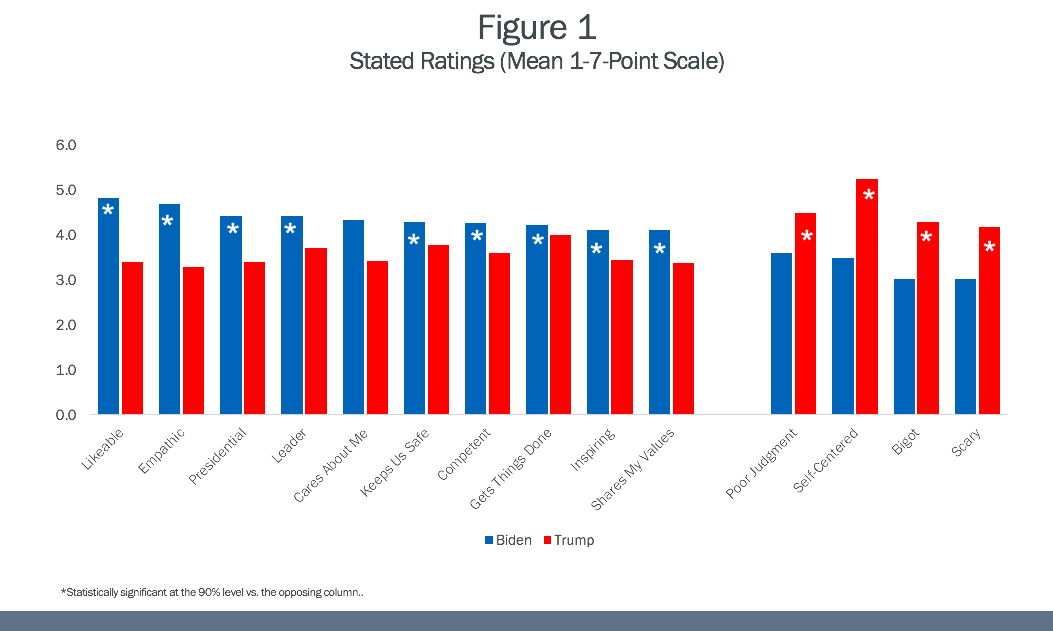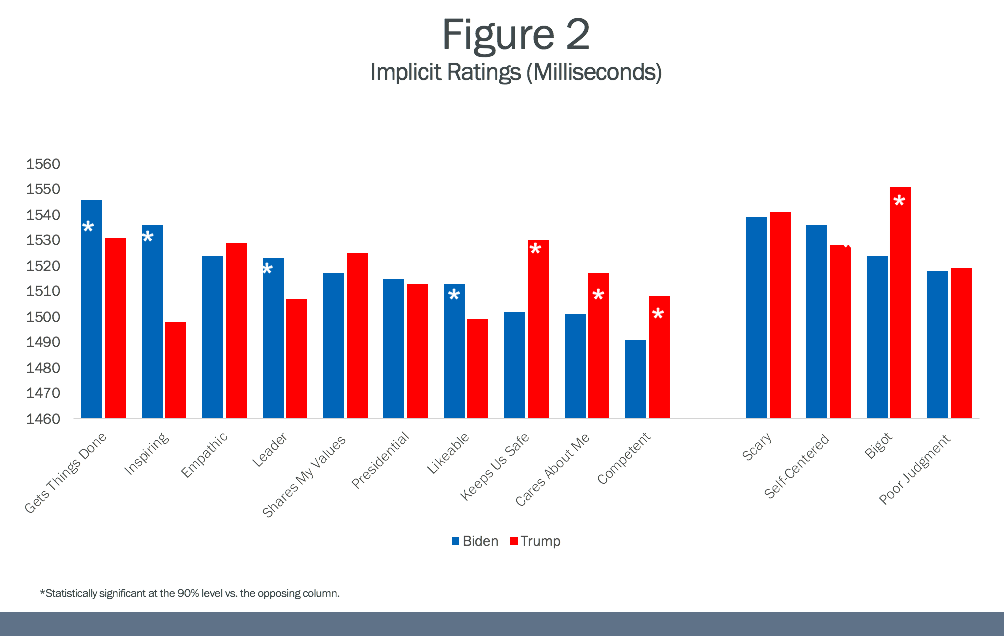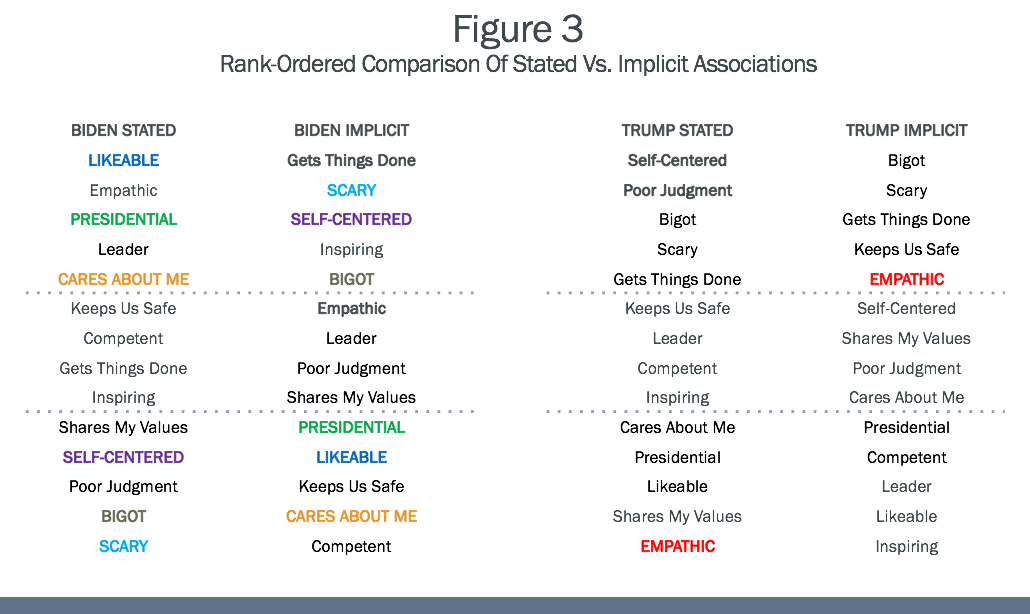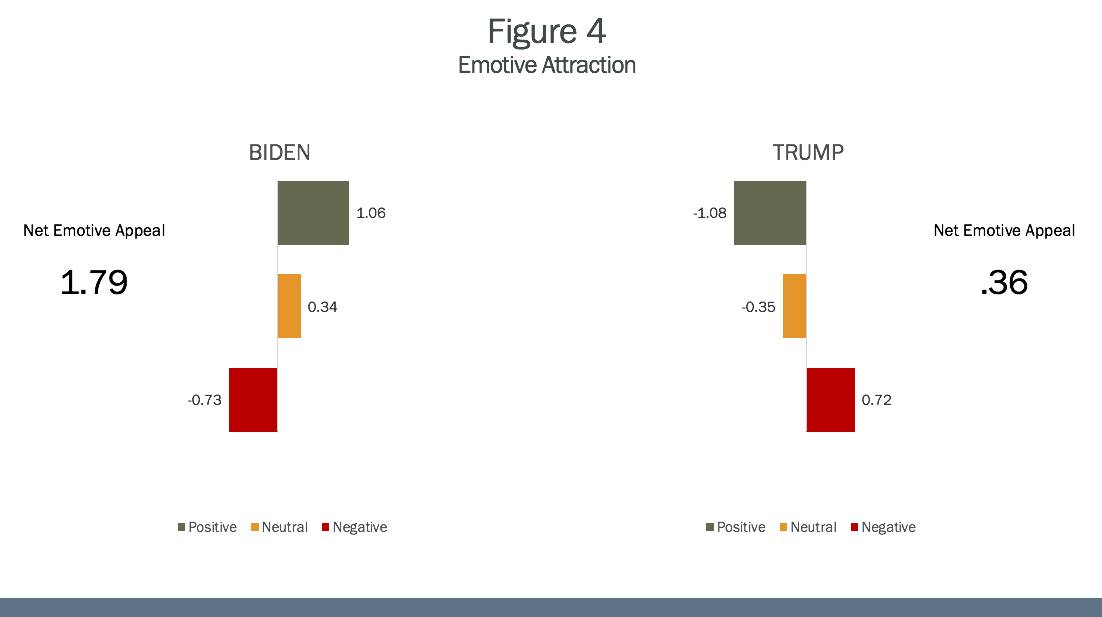Editor’s note: Joan Sinopoli is president of Sinopoli Brand Consulting, a Pennsylvania-based brand strategy and market research firm.
 Political candidates are the most challenging brands to manage and measure. For the second presidential election in a row, the polls appear to have been disconcertingly inaccurate. But it’s where they were accurate that matters, and they were spot-on when it came to Joe Biden’s plurality. The last pre-election poll aggregation issued by Real Clear Politics had Biden at 51% and Donald Trump at 44%. AP was similar. As of this writing, the count stands at just under 51% for Biden and close to 48% for Trump. So, the polls got Biden right, but they overstated his margin of victory.
Political candidates are the most challenging brands to manage and measure. For the second presidential election in a row, the polls appear to have been disconcertingly inaccurate. But it’s where they were accurate that matters, and they were spot-on when it came to Joe Biden’s plurality. The last pre-election poll aggregation issued by Real Clear Politics had Biden at 51% and Donald Trump at 44%. AP was similar. As of this writing, the count stands at just under 51% for Biden and close to 48% for Trump. So, the polls got Biden right, but they overstated his margin of victory.
There are many hypotheses about what went wrong (see Nate Cohn’s article for the New York Times) but what makes the most immediate sense is that there are Trump voters hiding in plain sight. Some simply avoided the polls; some were conflicted (hate the character, love my 401(k)); and some lied, not wanting to face even virtual disapproval from a faceless survey designer. Consider the following:
- In July 2020, the Cato Institute reported that 38% of Americans felt comfortable expressing their political leanings, but only 23% of self-identified conservatives felt that way. By comparison, 58% of “stanch liberals” reported feeling they can say what they believe.
- Since Trump’s defeat, right-wing social media networks have jumped in to offer a safe space for partisan conversation. For example, microblogging and social networking service Parler went from being the 1,023rd most popular download in Google Play to the top download in just two weeks. Conservatives are likely seeking spaces where they can speak without counterpoint or the threat of having their accounts suspended or shut down entirely.
Given reports of self-censoring conservatives, why would we expect Trump-leaners to talk openly with a stranger calling from a polling organization, especially those co-branded with the mainstream media?
Polling methodologists will study the 2020 results and enter the 2022 state races armed with corrections to sample and mode. But Trump is the most disruptive brand in memory to enter the relatively stable category of U.S. presidents. It’s fair to ask whether traditional survey instruments alone are sufficient to predict and measure the impact of a category disruptor.
That’s where implicit measurement comes in. Implicit measurement is not a substitute for a survey that provides a count of where people stand today. Instead, it measures associative networks that the brain has built up over time. Implicit methods uncover strengths and vulnerabilities that could impact the stated behavior. The Trump brand has the destruction of social norms baked into its DNA. Implicit measurement is designed to accurately assess beliefs that are at odds with social norms, providing insight into what people can’t or won’t say.
Methodology
Let’s take a look at data provided by Implicit Strategies. The firm asked respondents to rate each candidate on 14 attributes using a 1-7 scale. It then asked them about the same attributes using measures of associative networks.
A Stroop test was used to measure associative networks.
- In a Stroop test, each respondent begins by thinking about a brand (via a logo or some other prime). The test then shows them an attribute printed in one of four colors that are each shown (in color) in a corner of the screen. The respondent is asked to ignore the meaning of the word and instead match the attribute with the color. The thought behind this is that if respondents make the correct match immediately, they are focused on the task and the attribute is not associated with the brand. If it takes them a bit longer, the brand has forced them to focus on the meaning of the word, which identifies a stronger brand association.
Finally, the study measured emotive appeal using a distraction method.
- In this method, a brand is shown on screen too quickly to be seen, but slow enough to be processed subconsciously. A photo of a person is then shown, and the respondent is asked to answer questions about their impressions of that person. Respondents are influenced by the subconscious exposure of the brand, so the answers given are actually measuring their affinity with the brand.
Observations
Stated ratings give the expected responses, reflecting candidate/brand messaging, behavioral tonality and news coverage. They also yield an overwhelmingly positive predisposition for Biden (see Figure 1).

When we add the implicit associations, the picture gets murkier (Figure 2). Biden emerges as an aspirational choice, whereas Trump emerges as a strong protector. And both candidates share flaws, with the exception of bigotry – that remains a significant Trump association.

When we rank order stated vs. implicit attributes, several attributes flip in terms of strength of association (Figure 3).

Even without knowing the election results, it becomes clear looking at these figures that Biden would not easily sail to victory — a hidden affinity for Trump would keep the contest close.
Finally, if it were not already made clear by the associative networks, Figure 4, which shows the emotive attraction, illustrates how close the contest could be.

There are two striking observations:
- The two candidates are mirror images of each other. It would be hard to imagine a starker contrast.
- The differences in each level of attraction and the net emotive attraction are not significant, both hugging close to the mean. Despite Biden’s brand messaging on empathy and likeability, the competing Trump brand leveled the playing field. There was no difference in emotive attraction between the candidates.
Reconciling rational vs. implicit perceptions
The Biden brand
Voters were not entirely sold on the Biden brand. The campaign’s ability to stay on message was reflected in the strong stated ratings. Voters heard what he was saying and could echo his brand positioning: likeable and empathic Uncle Joe, a steady hand, experienced. His “fight for the soul of America” seemed to have gained ground, given his implicit association with inspiration. However, enough people still needed convincing: his relatability and presidential demeanor did not cross over into their subconscious network to become automatic associations. This may reflect some success on the part of the competing Trump brand to paint him – or at least the party he represents – as socialist and lawless (scary) and undermine his Black support by juxtaposing Biden’s crime bill with Trump’s criminal justice reform (bigot).
Biden’s sincere, patriotic brand reaped the benefits of familiarity and disciplined messaging, but the disruptor brand (and many analysts pointed out that Trump, not Biden, was running as the “challenger”) was successful in sowing doubt.
The Trump brand
The Trump brand – transactional vs. aspirational – was more mentally accessible to voters. What you see is what you get. Both the stated and implicit ratings support a brand image that can only be described as a “strong man” – someone who gets things done, keeps me safe and to some degree shares my values … but is also scary, bigoted and self-centered. This imagery was promoted in part by the Biden campaign, particularly in the closing days of the campaign, but was also embraced by Trump himself. The not-so-secret Trump strength, and perhaps the strongest support for the hidden/shy Trump voter theory, is the role of empathy. Trump’s empathy is his lowest-rated association. But implicitly, empathy shifts to the top tier for Trump.
Many voters believed Trump “gets” them – just think about how many times a supporter has been quoted saying, “He says out loud what I believe but can’t say.” It’s that personal connection that allowed voters to accept and, for some, revel in Trump’s shortcomings.
Even if many Trump supporters avoided participating in surveys, those who did presaged his stronger showing.
Implicit perceptions
Think of how we, as marketers and researchers, assess our brands. Quantitative surveys measuring KPIs remain a primary assessment tool, but we typically surround them with clarifying methodologies. We use qualitative but have added implicit methodologies informed by cognitive and behavioral science – and these can be conducted at scale, complementing traditional quantitative questioning. These methods are more adept at explaining deeply-embedded whys, thereby future-proofing brand strategies, tactics and – not the least important – brand messaging.
Political polling is imperfect, but humans crave certainty – perhaps more this year than ever before. This was an election in which rational thought was at war with our emotional reactions. An earlier understanding of the implicit perceptions attached to each candidate would have provided a welcome addition to the polling data and better prepared us for election week.
